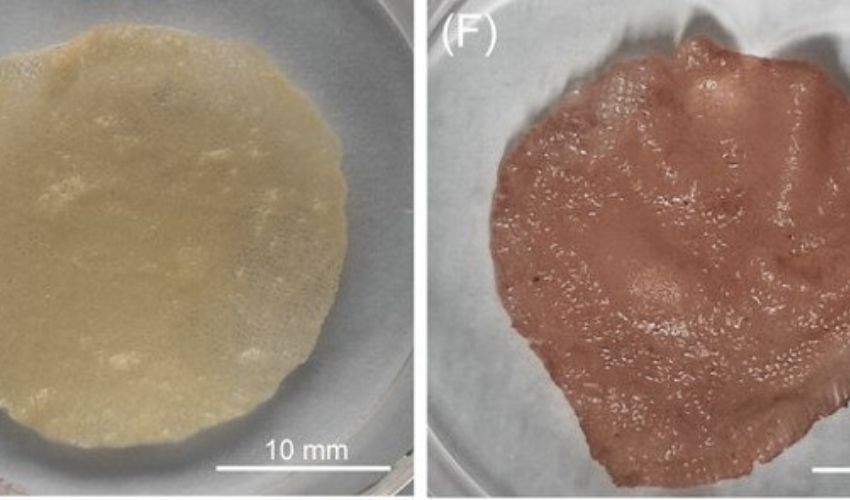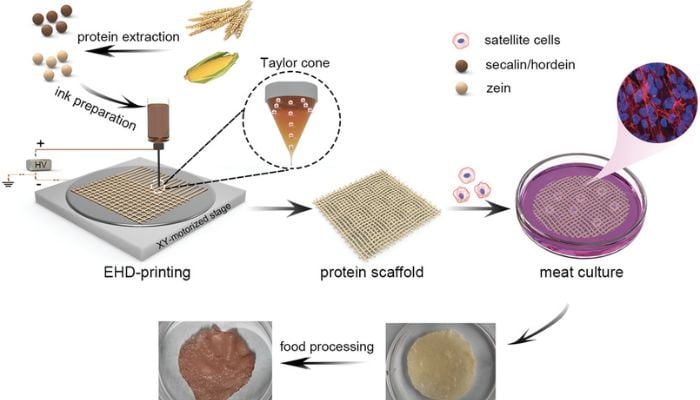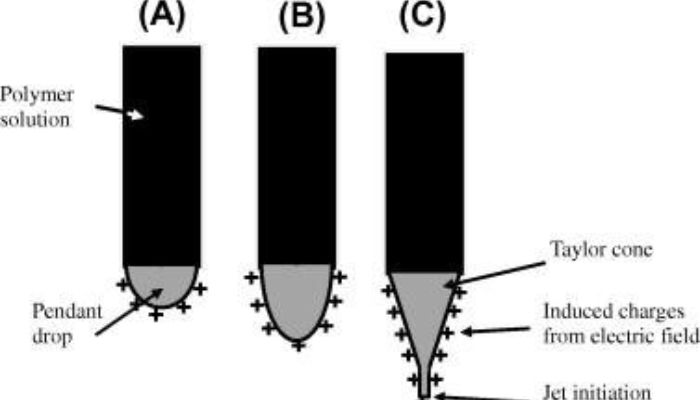New Ink for Emerging 3D Printing Technology to Make Cheaper Cultured Meat

Lab-grown meat is created by the reproduction of meat (animal muscle) cells in vitro. The process has great potential to offer eco-friendly and ethical meat to those who require the nutritional benefits of the food source but who take issue with the ethical or environmental concerns of the meat industry. Scientists from the National University of Singapore, National University of Singapore Suzhou Research Institute, China, and the Xi’an Jiaotong-Liverpool University, China have developed a new method to produce cultured meat (CM) of an appealing texture using new low-cost 3D printing inks as scaffolding.
The research saw skeletal muscle cells (bovine and porcine) made on 3D scaffolds. These scaffold cells are important to maintain the structural integrity of the product and produce the ideal texture by separating the cell layers to make it grow evenly. Therefore, the scaffold does not need a high tensile strength; it needs to be edible and able to absorb into the meat. Fibrous scaffolds ‘resemble the in vivo muscle tissue structure’ and are therefore of great potential in the production of CM. Researchers chose cereal prolamins (a group of plant storage proteins) present in ryes and cereals, to produce fully edible fibrous scaffolds, which they coloured with beet to improve the resemblance to meat.

Photo credit: Jie Sun/Xi’an Jiaotong-Liverpool University
The researchers used Electrohydrodynamic (EHD) printing to produce the scaffolds. This method of printing is a high-resolution printing technology. The printed liquid is driven by an electric field: the field causes the mobile ions in a polarizable liquid to accumulate. The electric forces cause the meniscus (the curve at the end of a container) to deform into a Taylor cone and the stress from the surface charge repulsion causes liquid to be emitted. Deposited droplets can be as small as 240 nm with spatial accuracy in the hundreds of nm.
Why Does It Matter?
Researchers found that these fibrous scaffolds, made of the 3D printing inks, were highly effective for the production of cultured meats. Professor Sun of the University of Xi’an Jiaotong-Liverpool University, China, summed up the importance of the experiment: “This is a novel and disruptive idea to mass produce cultured meat. Using nutrients from food waste to print scaffolds not only uses and increases the value of the food waste but also alleviates the pressure on the environment from animal agriculture.”

The process of EHD printing; (C) shows the nozzle ready to eject the ink. (Photo credit: Neil Basson/Free volume of electrospun organic-inorganic copolymers).
Professor Sun continued, “Currently, one of the major reasons for the high cost of cultured meat is the nutrient medium for muscle cells, which is still from animal proteins. In the future, if suitable plant extracts can be found to supply nutrients, that will further reduce the cost of cultured meat, making it more affordable.” This experiment might remind you of similar schemes, for example 3D Treats’ cakes using FDM printing or Aleph Farms’ project to make 3D printed lab-grown steak. You can find more information on this experiment HERE.
What do you think of these 3D printing inks? Let us know in a comment below or on our Linkedin, Facebook, and Twitter pages! Don’t forget to sign up for our free weekly Newsletter here, the latest 3D printing news straight to your inbox! You can also find all our videos on our YouTube channel.







